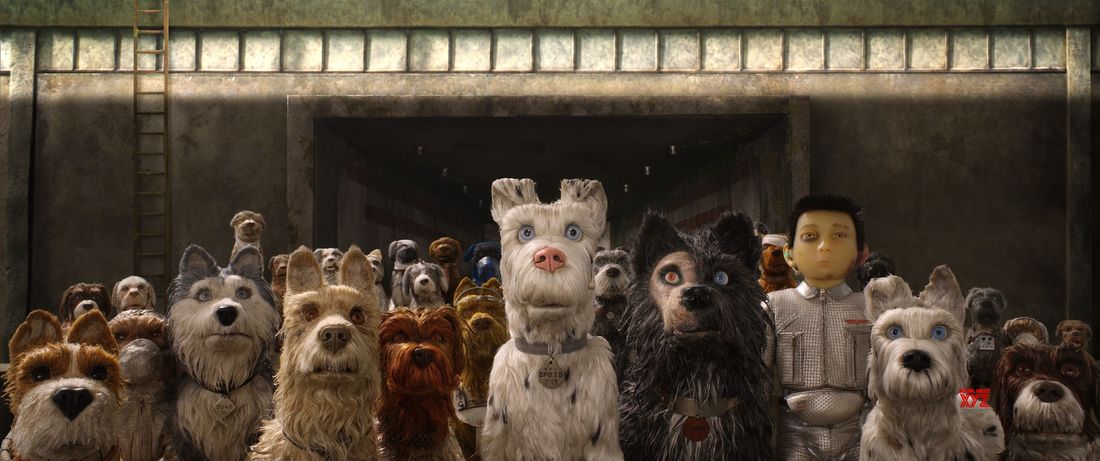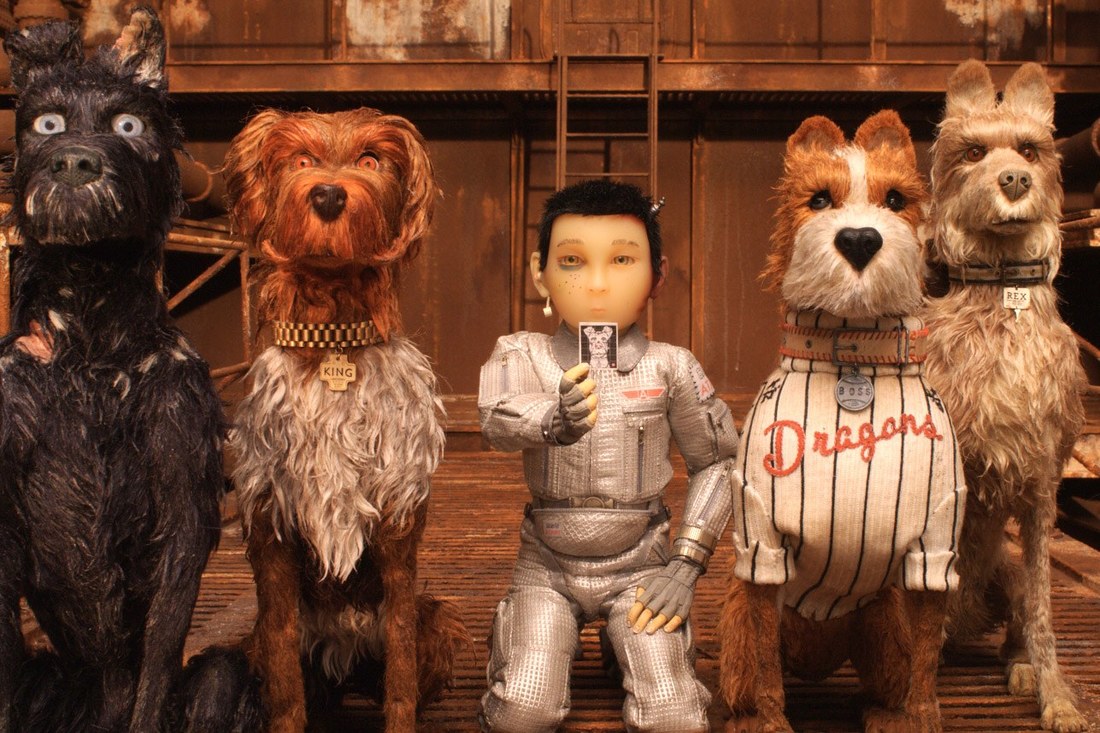It’s 20 years into the future in the Japanese Archipelago. All dogs have been exiled to Trash Island following an outbreak of “dog flu.” This is the setting of Isle of Dogs (Anderson, 2018), Wes Anderson’s latest film and his sophomore stop-motion feature. It’s now been a little over nine years since Fantastic Mr. Fox (Anderson, 2009), Anderson’s first animated feature which is based on the Roald Dahl book of the same name. Fox follows a group of anthropomorphized animals who rob three local farmers and have to relocate in the ensuing battle. To contrast, Isle of Dogs depicts a young boy’s battle rescue his dog Spots from government enforced exile (Liev Schreiber). In the time since the release of Fantastic Mr. Fox, Anderson and his team have clearly had time to improve on their craft. Isle of Dogs feels very much like any other Anderson film in terms of structure, but the film tackles societal issues in a new and refreshing way that clearly departs from Anderson’s past filmography.
Isle of Dogs opens with a notice, written in both Japanese and English, which advises the audience that all human characters speak in their native tongues. It then specifies that Japanese will be translated by an intermediary while all barks are rendered in English. This is a great example of the thorough, ordered nature of Isle of Dogs. The film is also characterized by a few devices that pervade Anderson’s body of work. For example, the film is divided into six acts which are both labelled by titles and announced by the narrator, a device that is present in almost all of Anderson’s films. Additionally, every shot in Isle, from wide City shots to close-ups of faces, is compositionally symmetrical. The focus on symmetry in his films has been commented on before; it is impressive to create completely symmetrical shots in live action. However, in a completely controlled environment like that of a stop motion set, the symmetry in each frame is only more precise. These factors all make Isle of Dogs feel just like any other Anderson film, but recent technological advancements have allowed for nuances that would have been impossible for Fox.
Like Fantastic Mr. Fox, Isle of Dogs was created using stop-motion animation. Thousands of still frames are combined to give the illusion of motion to puppets which are positioned by hand. In Fox, every principal animal character has fur on its face and hands. An unfortunate artifact of this fur was a inconsistent shift of hair in every frame due to the animator’s hands. Combined with other frames, the movement of each character would include this random shift of hair which was mostly distracting. Taking this into consideration, Wes Anderson directed his animation team to incorporate this movement to simulate wind. Now, the fur movement is consistent and motivated. In scenes where there is a lot of movement within the fur, wind noise accompanies. This serves to eliminate what was one of the most distracting elements of Anderson’s previous animated film. However, this change is a relatively minor consideration compared to the dramatic shift in political commentary that is absent from films like The Life Aquatic with Steve Zissou (Anderson, 2004) and The Grand Budapest Hotel (Anderson, 2014).
politics of this situation are hinted at during Kobayashi’s late night decree when the Mayor allows for political dissent. Dr. Watanabe, of the science party, makes a brief statement in which he bluntly states that the dog flu is not a danger to humans and abandoning man’s best friend is a mistake. Kobayashi’s supporters just ignore him. Doctor Watanabe continues to fight for dogs during the film, even going so far as to find a vaccine to dog flu. This accomplishment results in him receiving some poisoned sushi. His dissent is ultimately silenced. Sensing malicious intent of the government, a group of pro-dog students resists Mayor Kobayashi’s anti-dog rhetoric. According to dramatist Kenneth Burke’s theory of representative anecdote, films reflect societal fears and concerns. The drama of a movie is often representative of the current political climate of the society in which the film is created. In today’s political climate, a film which depicts the politically motivated and government sanctioned oppression of dogs (man’s best friend), is most certainly relevant. The only real difference between the government of our nation and that of Megasaki, is that in the end, the corruption of Kobayashi is admitted by the man himself and order is restored. The real world never seems to dispose of its trash quite as easily.
Beneath the political drama that forces dogs onto trash island and pervasive governmental corruption, lies a simple story of a boy, his dog, and the space between them. This relationship really is the crux of the story and the most heart-wrenching element. The audience needs to see the reunification of this boy and his dog. Isle of Dogs is a love letter not only to the unique relationships that we form with our pets, but also to Japanese film and culture. The deep reds, purples, and greens that shine in the futuristic city of Megasaki remind us of the Tokyo of today, while the symmetrical compositions and ordered set design are reminiscent of Japanese auteurs like Kurosawa. Anderson has often been criticized for his insistence in form over function, but in a society which focuses on balance and symmetry, his style feels right at home. If you are looking for a bit of escapism, I cannot think of a better film





 RSS Feed
RSS Feed
